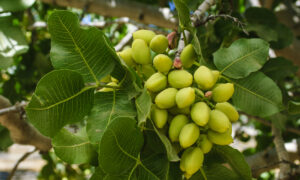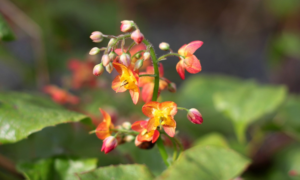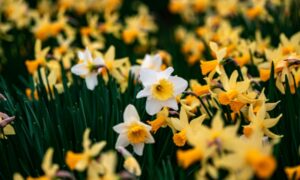We independently research, review, and recommend the best products. If you buy something through our links, we may earn a commission. Learn more.
Newcomers to gardening can often feel like they’re learning an entirely new language. With so many terms and concepts to understand, mastering the complex lingo of the horticultural world can be a challenge even for more seasoned green thumbs.
But building a solid grasp of the terminology shouldn’t be overwhelming – and that’s where our complete gardening glossary comes in! Think of this as your personal gardening dictionary, full of the terms and definitions you need to know to become a confident pro in the garden. So whether you’re keen to expand your gardening vocabulary, or look up a word that has you stumped, our complete and up-to-date gardening glossary will have you covered.
Contents
Annual
As the name suggests, annual plants complete their entire lifecycle within one growing season. This means that they germinate, grow, flower, seed, and die all within the space of just a single year. Annuals are a popular choice among gardeners looking to add quick, colorful bursts of color to their garden or landscape. For examples of common annual plants, take a look at marigolds, zinnias, and petunias. These can all be planted in the spring, and will typically bloom throughout the summer and into the fall before dying with the first frost.
Biennial
Biennials require two growing seasons to complete their lifecycle. During the first season, they typically only produce leaves. And during the second season, they produce flowers, seed and die. Some examples of common biennial plants include foxgloves and hollyhocks. They can be planted in the spring or fall and will typically bloom in the second year of growth.
Bud union
A bud union is the point on a grafted plant where the upper part of the plant (known as the scion) is joined to the lower part of the plant (the rootstock). The bud union is typically marked by a swollen or knobby area on the trunk of the plant, found just above the soil line.
Bud union is important because it tells gardeners where to prune the plant, and how to care for it. It also determines the hardiness zone of the plant, and how much water and fertiliser it requires. Importantly, the bud union is also the point where the plant is most susceptible to disease and pests. Be sure to keep this area clean, and protect it from frost, snow, and heavy winds.
Contact weedkiller
Sometimes referred to as “contact herbicide”, contact weedkiller, is a type of pesticide that works by physically coming into contact with the leaves, stems, and other parts of a weed in order to kill it. Contact weedkillers typically work quickly on a wide range of weeds, killing only the parts of the plant that they’re applied to. This means that contact herbicides will be ineffective if the weed has underground runners or rhizomes.
Contact weedkillers are often used in landscaping, gardening, and agriculture to control weeds in lawns, gardens, and other cultivated areas. They’re applied as a spray, a powder, or a granule, and are available in both organic and synthetic formulations. Contact herbicides can be a great option for spot-treating small infestations of weeds, but systemic herbicides are generally needed to tackle weeds that have spread underground.
Deciduous
Deciduous plants shed their leaves annually, typically in response to changing seasons or other shifts in environmental conditions. This, of course, is in contrast to evergreen plants, which retain their leaves year-round. Deciduous trees and shrubs are known for their spectacular fall foliage, and often provide shade during the summer months while allowing sunlight to filter through during the winter months.
Evergreen
In contrast to deciduous plants, Evergreens maintain their leaves year-round. This means that they boast green leaves throughout all seasons, making them a popular choice for gardeners who want to maintain consistency in their garden throughout the year. Some examples of common evergreen plants include pine trees, holly bushes, and boxwood shrubs. These plants are known for their ability to provide year-round greenery, making them particularly appealing to gardeners taking on landscaping projects. Evergreens are also excellent at offering privacy, wind protection, and a natural habitat for wildlife.
Foliage
Foliage refers to the leaves of a plant, and it can come in a wide range of shapes, sizes, and colours. Unsurprisingly, it plays an important role in a plant’s overall appearance and appeal. Some plants have large, showy leaves, whereas others may have small, delicate ones.
Foliage is also crucial to how a plant functions. As the primary site of photosynthesis, it provides the plant with the energy it needs to grow, thrive, and remain healthy. What’s more, leaves also help to regulate a plant’s temperature and water loss.
Foliage is typically an important consideration for gardeners and landscapers when selecting plants for a specific area, or as part of a wider design. Some types of foliage are used for privacy, shading, or as a background for other plants.
Germination
Germination is the point at which a seed sprouts and starts to grow into a new plant. It’s the first step in a plant’s life cycle, and it begins when a seed absorbs water and starts to swell. This process triggers the seed’s embryo to begin to grow and develop, breaking through the seed coat, before producing a small shoot and root.
Germination is a critical stage in the life of a plant. It’s influenced by a variety of factors that include temperature, moisture, light, as well as the presence of certain chemicals. Some seeds require specific conditions in order to kick off the germination process. Where some plants will germinate under a wide range of conditions, others require specific circumstances – for instance, a period of cold stratification or exposure to light.
Ericaceous
Ericaceous plants require acidic soil to grow. The term “ericaceous” comes from the genus name of one of the most well-known acid-loving plants: the heather (Erica). Ericaceous plants are often grown in gardens and landscapes for their attractive foliage and flowers, and they can be quite sensitive to changes in pH. Some examples of common ericaceous plants include:
- Blueberries
- Cranberries
- Heathers
- Rhododendrons
- Azaleas
- Camellias
- Gardenias
- And more
If you’re interested in growing ericaceous plants, you’ll need to make sure that your soil is acidic enough to support them. You can adjust the acidity by adding peat moss, sulfur, or pine needles to the soil. Or, alternatively, by using fertilizer specially formulated for acid-loving plants.
Hardy tree
Hardy trees are able to tolerate a wide range of temperatures and weather conditions, including harsh winter temperatures, strong winds, and even heavy snow. These trees are often used in landscaping and gardening since they’re able to thrive in a wide variety of climates and regions. Some hardy trees are also able to tolerate drought, urban pollution, and other environmental stressors that would prove damaging to other trees.
Oak, maple, pine, and spruce are all types of hardy tree – so it’s likely you have some in your garden! But be careful: just because a tree is considered “hardy”, it can still be affected by certain conditions, such as pests, diseases, and poor soil.
Herbaceous plant
An Herbaceous plant doesn’t have woody stems, and typically dies each year. This type of plant usually has soft, green stems that aren’t lignified, meaning they don’t contain woody tissue. They are also typically smaller in size than woody plants.
Examples of herbaceous plants include:
- Annuals: plants that complete their life cycle in one growing season
- Perennials: plants that come back year after year
- Biennials: plants that take two years to complete their life cycle
Herbaceous plants generally have different growing and maintenance needs compared to their woody counterparts. They usually require more frequent watering, fertilizing, and deadheading. An Herbaceous plant may also require staking, mulching, and dividing.
Mulch
Mulch is a layer of material that’s spread on top of soil that surrounds plants. It’s used to conserve moisture in the soil, suppress weed growth, and moderate the temperature of the soil. Mulch can also be used to improve soil structure, reduce erosion, and even offer aesthetic value. Mulch should be spread to a depth of 2-4 inches, and can be applied around the base of plants, trees, and shrubs.
Organic matter
Organic matter simply refers to a substance that comes from decomposed material from animals or plants. It’s typically used to enrich soil and create a perfect environment for plants to grow. Thanks to its ability to retain moisture and provide essential nutrients, organic matter is the secret ingredient for any successful garden.
Perennial
Unlike annuals and biennials, which complete their life cycle in one and two year cycles respectively, perrenials lives for more than two years. perennials can be either woody or herbaceous plants.
Perennials can be woody or herbaceous plants, and are found in a range of different habitats, from gardens and meadows to wetlands and woodlands. They can be planted in borders, beds, and rock gardens, or even used as ground covers or accent plants.
Perennials are particularly popular among gardeners since they’re low maintenance and don’t need to be replanted every year. They typically require less watering, fertilising, and deadheading than their annual counterparts.
Pollination
Pollination is simply the transfer of pollen grains from the male parts of a flower to the female parts of either the same or a different flower. Essential for reproduction, this process enables fertilisation and the production of seeds. Pollination can occur naturally through wind, the behaviour of insects, hand pollination, or via the use of bee colonies.
Rhizome
A rhizome is a fleshy underground stem that grows horizontally. As an important part of the reproductive structure of many plants, a rhizome produces roots and shoots at its nodes. Since they can be cut and replanted, many gardeners use rhizomes to propagate plants.
Rootstock
Rootstock refers to the roots and lower part of a plant. Gardeners will often use it for grafting, where a scion is joined to a desirable rootstock in order to produce plants with more desirable traits, such as disease resistance, increased yields, or improved fruit quality. A rootstock will typically provide a strong and healthy root system capable of supporting a grafted scion. The resulting plant, known as a grafted plant, is a combination of both the rootstock and scion.






